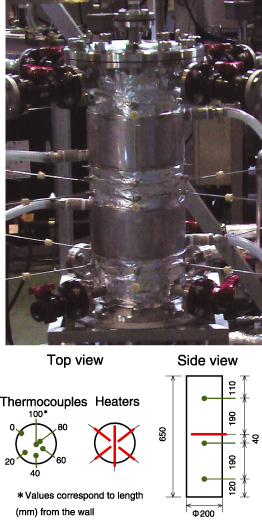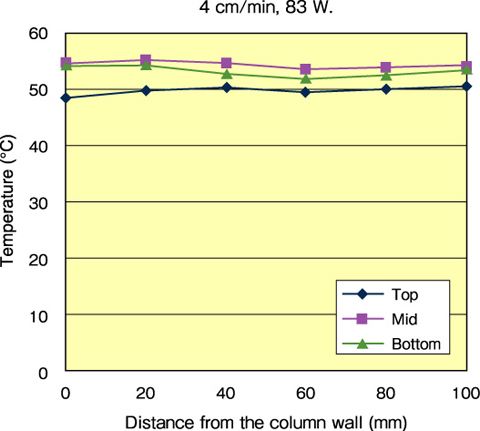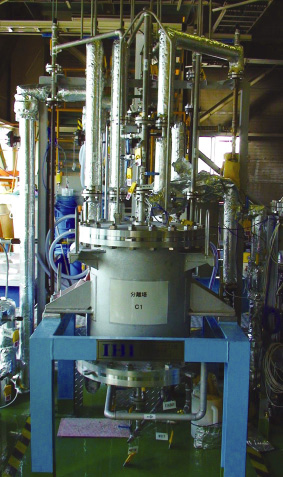
Fig.1-13 Column used for safety tests

Fig.1-14 Axial distribution of temperatures inside column

Fig.1-15 Engineering scale testing system
Neptunium (Np), americium (Am), and curium (Cm) generated in spent nuclear fuel can be burned to some extent when they are fabricated and used as a MOX fuel. Recycling them will decrease the quantity of these elements that will be contained in highly active radioactive waste. An extraction chromatography technology has been developed in order to separate Am and Cm from highly active liquid waste in nuclear reprocessing. The technique uses a special adsorbent packed in a column. Radioactive waste is fed into the column and the targeted ions are adsorbed and separated from fission products. The high-level liquid waste contains radioisotopes that generate heat and the adsorbent consists of organic extractant; temperature control is thus essential to maintain safety from fire or explosion hazards.
The thermal stability of a number of candidate adsorbents was examined in terms of their pyrolysis behavior to confirm their operational safety. It was also found that, in practical use, there is not a problem with degradation of the adsorbent with exposure to nitric acid solutions as well as γ rays from radioactivity.
When Am and Cm are adsorbed, the possibility of heat accumulating due to their activity should be considered and minimized. The engineering-scale column shown in Fig.1-13 has electric heaters to simulate radioactivity, and was used to investigate temperature distribution inside the column. The temperature inside the column remained constant across the radius as shown in Fig.1-14. The increase in temperature in the axial direction was as small as 3~5 °C downstream of the heaters. It was thus confirmed that the separation operation of the column is safely conducted with thermal stability.
Based on this knowledge, an engineering-scale testing system was fabricated, taking remote operation into account, as shown in Fig.1-15. On examination it was found that prevention of abnormal temperature increases is feasible, even supposing a case in which the feeding solutions are forced to a stop.
This series of tests for the engineering column demonstrated its safety properties, and was a step toward the practical application of extraction chromatography in nuclear power.
The present study is the result of “Development of MA Recovery Technology by means of Extraction Chromatography, ” which was entrusted to us by the Ministry of Education, Culture, Sports, Science and Technology of Japan (MEXT).